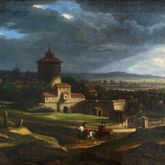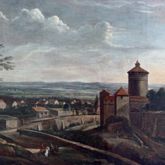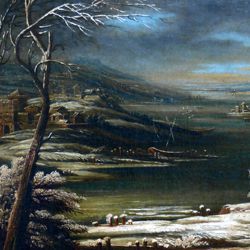Wilhelm
Bemmel
painter
born Utrecht, 10. Jun 1630
died Wöhrd bei Nürnberg, 20. Dec 1708
Patriarch of the artists´ family, came to Nuremberg in 1662. He was a landscape painter, human or animal figures in the painted landscapes were painted by his son Peter, Johann Murrer, Johann Franz Ermels and Heinrich Roos.




